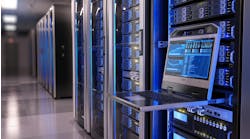During the first week of May, members of the electrical recycling industry sat across the table from major electrical device manufacturers and distributors to discuss how Professional Electrical Apparatus Recyclers League (PEARL) technical standards and procedures can help protect North America from the growing problem of electrical counterfeit goods, while guaranteeing a quality source of surplus and out-of-stock electrical devices.
At PEARL’s recent 11th Electrical Safety and Reliability Conference & Exhibition held May 3-6 in Costa Mesa, Calif., electrical recyclers met for the first time as a group with several key players in the electrical industry, including Eaton, UL, WESCO, and the National Electrical Manufacturers Association (NEMA). Following two days of presentations and a third of meetings and deliberations, PEARL board members agreed to several items designed to improve safety and efficiency of the electrical industry. Working with industry participants, PEARL members agreed to:
- Finalize procedures and move forward with mandatory third-party site and technician compliance and qualification inspections of all PEARL-member testing and remanufacturing facilities as required by PEARL bylaws;
- Improve the ease-of-use of PEARL’s Test & Inspect and Remanufacturing standards by creating a member-only repository of technical device specifications and manufacturing recommendations for members to use as a reference when following PEARL’s Test & Inspect, or Remanufacturing standards. This database is in addition to publicly accessible section of the PEARL Web site that tracks news on counterfeit electrical goods to support the need for greater public safety in the electrical industry;
- Further improve the ease-of-use of PEARL’s standards by making computer-based forms for documenting devices covered under PEARL Test & Inspect, and Remanufacturing standards available to all members;
- Promote training and technical knowledge via postings of professional training available throughout North America;
- Develop member discounts for various training, good and services important to electrical recyclers and requalfiers; and
- Continue discussions with key distributors and manufacturers on the best way to develop new standards and processes that will further improve electrical safety in North America by fighting the import and sale of counterfeit electrical goods.


